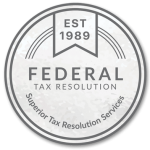Blog > Climate amp Environmental > METHODS FOR AGRICULTURAL COOPERATIVES
METHODS FOR AGRICULTURAL COOPERATIVES
June 25, 2019 - Douglas Myser

Methods for agricultural cooperatives. In a Internal Revenue Procedure, the IRS provided methods of calculating W-2 wages for purposes of Sec. 199A(g)(1)(b)(1), which limits the amount of a deduction available to specified agricultural or horticultural cooperatives. The deduction is substantially similar to the domestic production activities deduction under former Sec. 199, which was repealed by the legislation that enacted Sec. 199A, known as the Tax Cuts and Jobs Act of 2017, P.L. 115-97. Proposed regulations issued on the same day provide other guidance on the deduction for cooperatives and their patrons. Methods for agricultural cooperatives.
The Sec. 199A(g) deduction is equal to 9% of the lesser of a specified cooperatives (1) qualified production activities income, or (2) its taxable income. The deduction is further limited to 50% of the specified cooperatives W-2 wages for the tax year, which are determined similarly to W-2 wages for purposes of the qualified business income deduction under Sec. 199A(b)(4), except that they are limited to amounts allocable to domestic production gross receipts for purposes of Sec. 199(g)(3)(A). A specified cooperative is an organization described in Secs. 1381 through 1383 engaged in the manufacturing, production, growth, or extraction in whole or in significant part of any agricultural or horticultural product, or in the marketing of such products. Methods for agricultural cooperatives.
The proposed revenue procedure provides three methods for calculating IRS W-2 wages for this purpose, The unmodified Box Method, the Modified Box Method, or the Tracking Wages method. These are essentially the same as the three methods for calculating W-2 wages for eh QBI deduction for other qualifying trades or businesses under Sec. 199A, as described in Rev. Procedure 2019-11, issued in January of 2019, only substituting "specified cooperative" for "taxpayer". Under the notice, to determine W-2 wages properly allocable to DPGR, a specified cooperative may use any reasonable method that is satisfactory to the IRS, based on all the facts and circumstances, so long as it is consistently applied form one year to the next.
The IRS also issued proposed regulations providing further guidance regarding the section 199A(a) deduction rules and regulations. These rules set forth criteria useful to those businesses. IF your business fell outside of these rules, and incurred a large back tax debt, call this Tax Resolution Services Company for Tax Relief you may be eligible for in the IRS Revenue Code, including the IRS Fresh Start Program.
